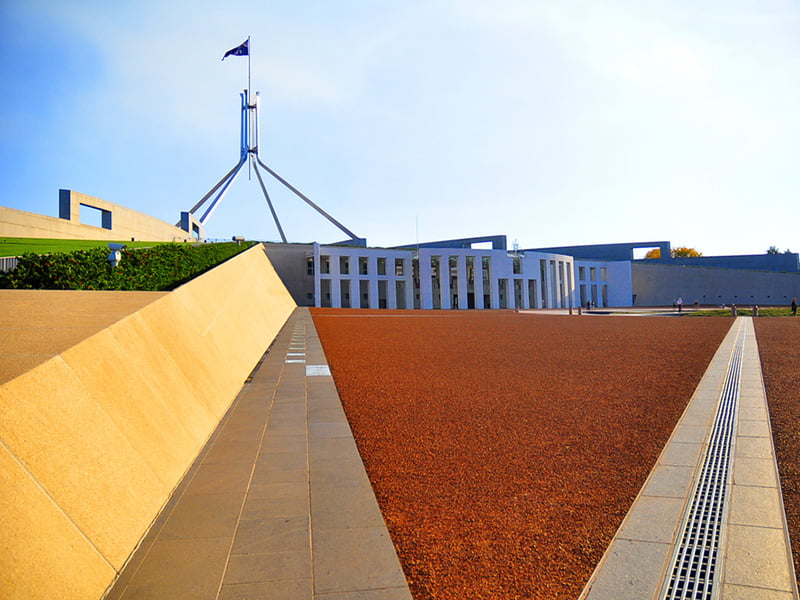An in-depth investigation of the way government measures outcomes in Australia’s innovation system conducted by the most senior of public sector advisors is missing in action, gathering dust somewhere, two years after it was due for publication.
The Innovation Metrics Review was carried out jointly by the Office of the Chief Scientist and the Industry department’s Office of the Chief Economist and was due to publish in May 2019.
It has never seen daylight in the public sphere. An Innovation Metrics Review Taskforce was created for the project but is no longer active. The review is nowhere to be seen.
An Industry department spokesperson said this week that the report was “currently under consideration.” Two years late and there is no timetable for when the report (which cost $1 million, according to the 2018-19 federal budget) will be released, or even if its recommendations will be made public.

No draft report is available. And although the discussion paper that accompanied the review is available online, submissions to the taskforce are not.
There is no indication from the department or anyone else as to why this seemingly innocuous investigation of how we measure our national innovation system is so contentious.
It is worth recalling the genesis of the Innovation Metric Review. It is not the result of a thought bubble, but rather the lengthy and insightful work of experts.
The thinking behind the review is not rocket science. You don’t need to be a $12,000-a-day management consultant to understand Peter Drucker’s famous axion “If you can’t measure it, you can’t improve it.”
At a time when the federal government is dropping more than a billion dollars on its Manufacturing Modernisation Initiative, why don’t we have a modern methodology for understanding whether the money is well spent. How good is irony?
Malcolm Turnbull’s Ideas Boom – the National Innovation and Science Agenda (NISA) – unveiled in late 2015 had measurement at its core and set out a quite methodical approach to understanding the innovation system.
History buffs from that ancient era of six years ago will remember the NISA created a new advisory body Innovation and Science Australia.
The ISA was originally chaired by venture capitalist Bill Ferris with then-Chief Scientist Alan Finkel as its deputy. The board included industry luminaries like then-Google chief Maile Carnegie, Atlassian’s Scott Farquhar, Seek founder Paul Bassat and AirTree’s Daniel Petre.
The ISA’s first order of business was to conduct a 200+ page innovation, science and research system review. This was to provide the benchmark that identified all the moving parts within the innovation system.
Next up, the ISA commissioned the keystone Australia 2030: Prosperity Through Innovation Report which was to be Australia’s strategic plan for an economy in transition.
The 2030 strategy made 30 recommendations to governments, including a that the government improve “metrics and methodologies to fully capture innovation and to link it to economic, social and environment” (Recommendation 30).
The government response to the ISA 2030 included support for Recommendation 30, noting that:
“The Government supports ongoing improvements to innovation metrics and methodologies. This creates a robust evidence base that provides us with a clear picture of our performance on innovation and will help pin-point issues in the system that may be limiting our capacity to innovate. This enables the Government to design cost-effective and robust policies to best address such issues.
“As part of the 2018–19 Budget, through its Australian Technology and Science Growth Plan – Better Data to Track Innovation in Australia initiative, the Government commits to a review of innovation metrics. The adequacy of the current innovation data collections and methodologies will be reviewed with a view to refining existing methods and developing new ways of measuring innovation performance.”
And so the Innovation Metrics Review was conducted, led by the then-Chief Scientist Dr Alan Finkel and Chief Economist Dr Mark Cully. The review included consultations with 50 stakeholders prior to an issues paper being produced – and then a further public consultation and calls for submissions.
A draft report was never published, and public submissions have not been made publicly available.
The final report was handed to government – due in May 2019 – and has been under consideration ever since.
What on earth could Alan Finkel and Mark Cully possibly have suggested that led to their report and recommendations being so comprehensively deep-sixed?
Which brings us back to Peter Drucker: “If you can’t measure it, you can’t improve it.” Our innovation system is hardly the envy of the world. We know this because the OECD and others provide key benchmarks against our peers.
If we are not applying modern metrics and methodologies to our innovation system, how will we ever improve it?
Of course, the Innovation Metrics Review must be made public, because the public paid for it! Why is it gathering dust?
You do have to wonder at the corporate memory in a portfolio like this. Christopher Pyne was Industry minister when the NISA was launched. By my calculation, it would have been Greg Hunt who was minister for the period when the innovation science and research system review was being carried out.
But Arthur Sinodinos followed by Michaelia Cash would have been at the helm the Industry portfolio through most of the period in which the 2030 strategy report was being put together, and the early stages of the Innovation Metrics Review.
And Karen Andrew has taken charge by the time the innovation metrics review was handed to the government (and due to be published).
And now to the current minister, Christian Porter.
Do you know more? Contact James Riley via Email.

